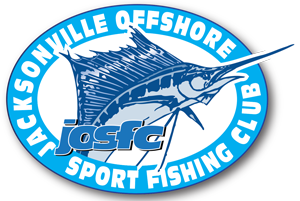Fighting the Snapper Closure
This is a GREAT article on the Amendment 17A Snapper Closure, and what we are fighting so hard to correct. We owe a big thanks to Jim for the work he does!
By Jim Sutton
 On Friday, Amendment 17A went into effect, with a caveat that a massive fishing closure off the coast of Northeast Florida and a sliver of Southeast Georgia be delayed for six months.
On Friday, Amendment 17A went into effect, with a caveat that a massive fishing closure off the coast of Northeast Florida and a sliver of Southeast Georgia be delayed for six months.
The amendment shuts down a portion of the Atlantic — about 4,800 square miles — to nearly every targetable bottom fish from 98 feet east to 240 feet. The closure runs from approximately 12 miles north of Sebastian, Fla., to around Brunswick, Ga. And according to the South Atlantic Fisheries Management Council, it is meant to remedy severe overfishing of red snapper. The SAFMC oversees Atlantic waters from North Carolina to Key West.
Originally, the plan included the entire region in this closure of over 70 species of reef fish. But one by one, some states were excluded from the fishing closure. According to the SAFMC, that is an incorrect statement. It insists no states were excluded from the closure, but that some states were “not included” in the closure. I stand corrected.
First, North Carolina became not included. South Carolina was “not included” next. The SAFMC OK’d this because, it said, the waters
there do not hold as many red snapper as those off Georgia and Florida. They insist that the move was not political. It was science. Maybe so. But at least some scientific types wonder how good or bad reef fish habitat begins and ends at state lines rather than the geographic locations of life-spawning ledges and other fish-holding structure offshore.
Next Georgia, or most of it, somehow became not included. South Florida was never included. So in the end, it falls to Northeast Florida to apparently save the South Atlantic’s severely overfished red snapper population because it has the most snapper to save, according to SAFMC science — an oxymoron from the start, say many who actually fish the waters.
Curious minds might wonder how allowing incidental by-catch of red snapper in areas where their numbers are already weak — but apparently not overfished — is going to help the species avoid the spiral toward extinction predicted by the SAFMC and the Pew Environment Group. Some conservationists of note, for instance, believe that in African regions where elephant herds have been severely overpoached, it is of greater importance to protect them than the healthy herds.
There is new data on fish populations in a study called SEDAR 24. Amendment 17A is based on SEDAR 15, which has been discredited by nearly every marine biologist not on the National Marine Fisheries Service payroll and its own congressional oversight committee. “Fatally flawed” is the most common assessment buzzword.
Credit the SAFMC with delaying the closure until the new data can be digested.
However Dave Heil, attorney for the Recreational Fishing Alliance said that SEDAR 24 is similarly flawed. It is based on the same historical guessing game as the earlier study, which extrapolated data back to 1945 when, not coincidentally, there was no real data. My dictionary’s definition of “extrapolate” is “to estimate the value of a variable outside the tabulated or observed range.” The few commercial boats that could make the trip out there 65 years ago kept few if any records. And certainly what little there was for science to glean from them was no closer to the truth that the numbers those early skippers kept for the IRS.
Heil said Friday that the FRA is amending a complaint filed in federal court to overturn the regulations. The basis of the suit is that the NMFS is required by the Magnuson Stevens Reauthorization Act to use “best available science” in drafting regulations. He said it is not. He said that the NFMS has also now violated Magnuson standards that state, in part, “conservation and management measures shall not discriminate between residents of different states.”
Heil also believes that Amendment 17 might have been illegally implemented. The Magnuson Stevens Act in Section 304 requires the secretary of commerce to review the rule, take into account all comments received, and to “approve, disapprove or partially approve a plan … by written notice to the Council.”
At the top of the SAFMC’s website is a link titled “Note! Secretary of Commerce approves snapper grouper Amendment 17A.” The letter was written, however, by the NMFS’ southeast regional administrator and voting member on the SAFMC, Roy Crabtree — not commerce secretary Gary Locke. That’s a big gap in the organizational ladder from Washington, D.C., to St. Pete.
NOAA spokesperson Kim Amendola said that’s standard operating procedure. Heil said there’s no language in Magnuson to allow delegation of those requirements. That question might be decided in court.
But either way, Heil made a very good point. When one person, Crabtree, kick-starts Amendment 17A, hires and fires those gathering the data used in it, leads a council whose votes are advisory only and not legally binding on him, orchestrates the movement of the rule throughout the process, has a vote on its outcome and then signs off on the end product — something’s badly off kilter.
“There is none of the checks and balances. All the rulemaking resides in one person,” Heil said.
“It’s wrong, “he said.
He’s right.

